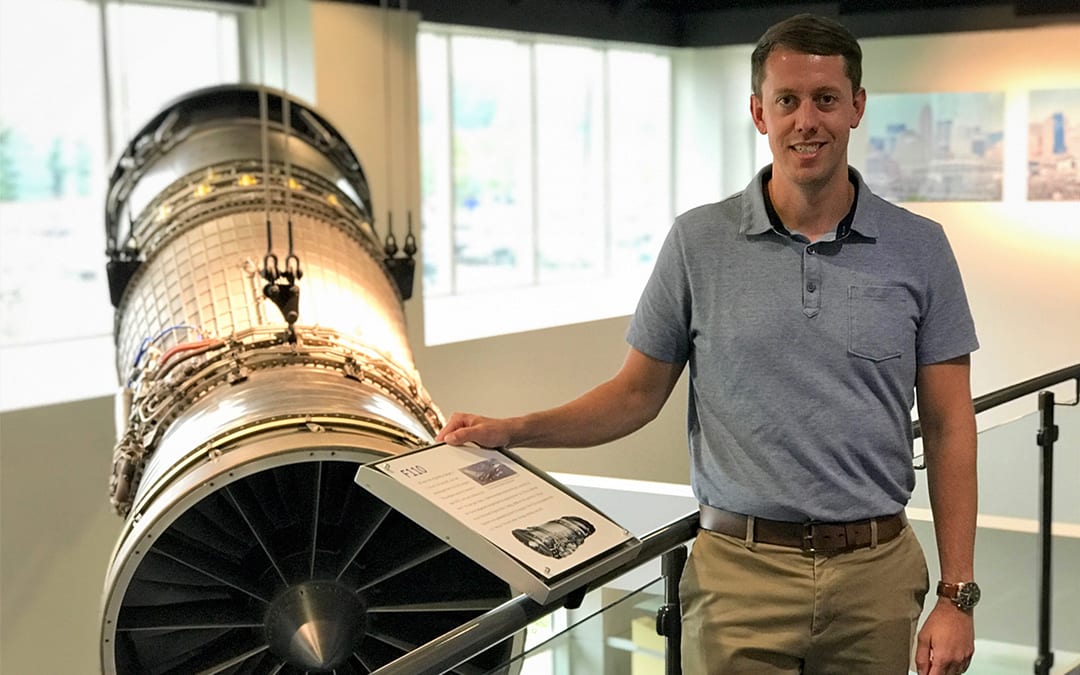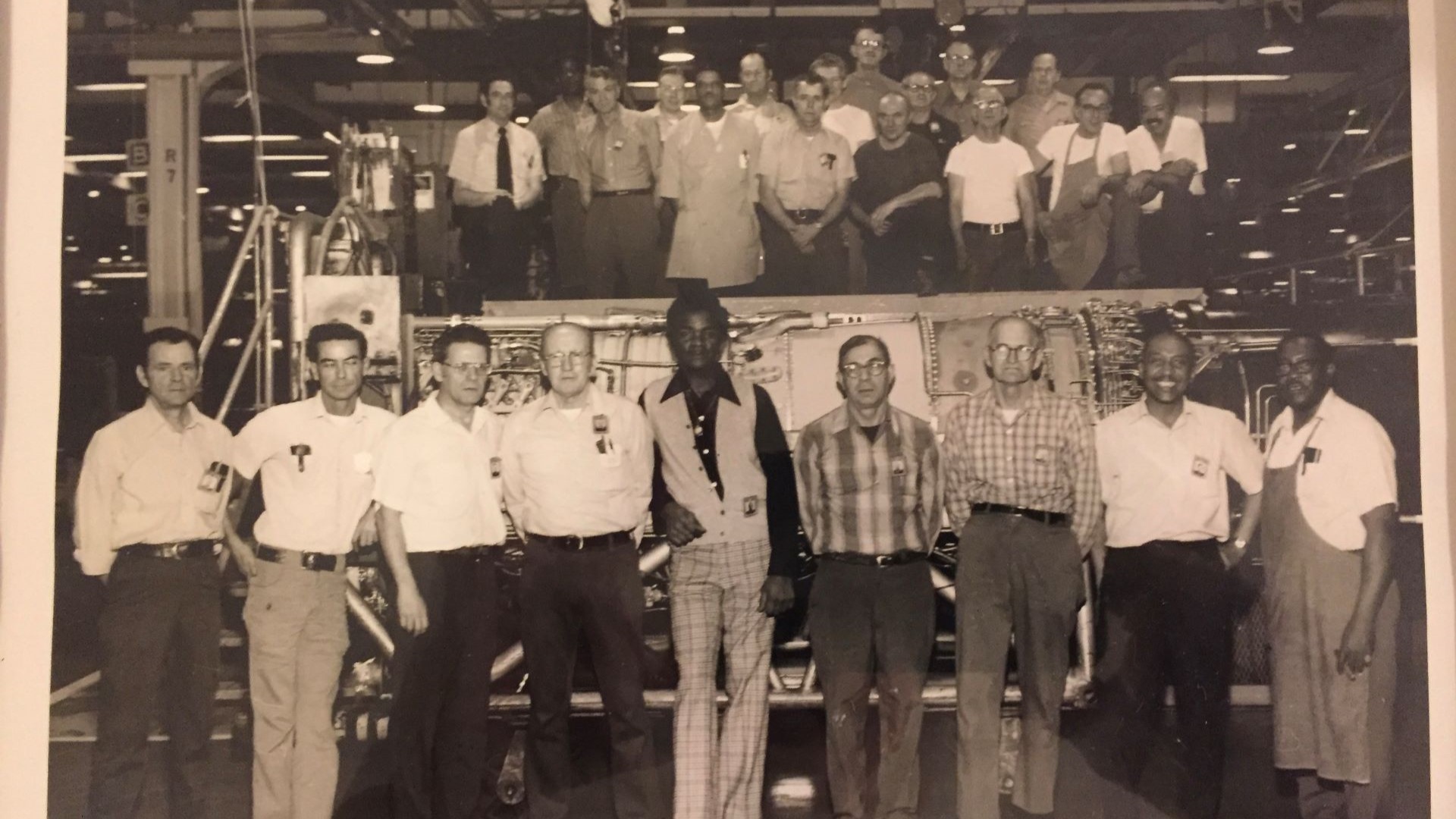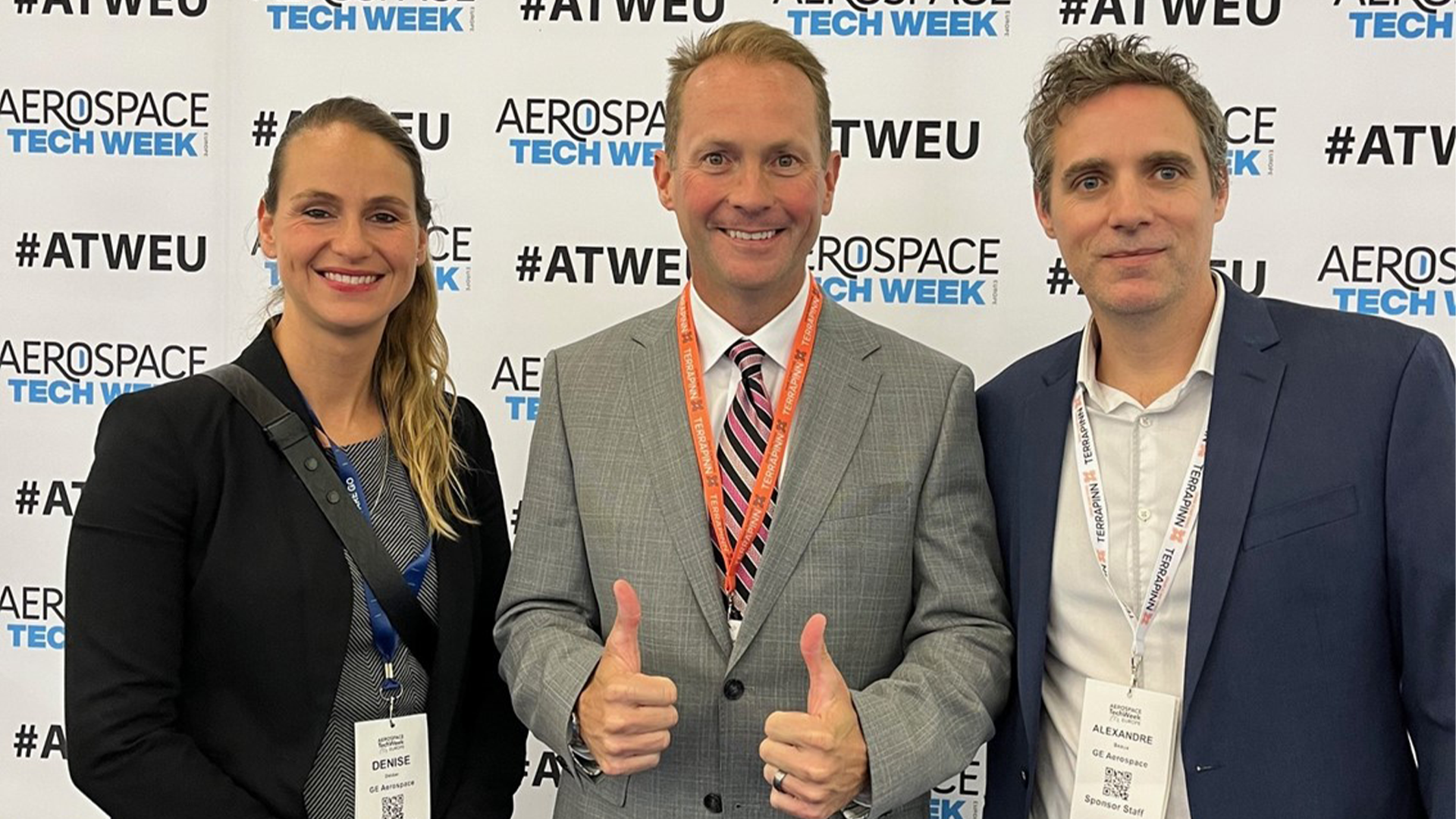Love Engineering? So Does Air Force Veteran and GE Aviation Engineer Mike Chenery
October 16, 2019 | by Cole Massie
November 2013. Mike Chenery’s Air Force-issued boots dig into foreign soil at the Al Udeid Air Base in Qatar for the first time. And it’s sandy.
Perhaps the most immediate and striking characteristic newcomers notice about this part of the world is the unforgiving climate. Situated about 20 miles inland from Qatar’s eastern coast, Al Udeid Air Base regularly sees temperatures exceed 100 degrees Fahrenheit (37.7 degrees Celsius). That’s without factoring in the accompanying humidity, which is driven by Qatar’s proximity to the Persian Gulf.
When Chenery arrives, it’s the “cool” season; in Qatar, when the mercury hovers between the mid-80s and low-90s during the day, that’s considered cool. By the time he leaves his deployment a year later, he has seen a thermometer hit 130 degrees. It’s a long way from his native North Carolina.
Part of Chenery’s role in the engineering squadron at the base is to go blow-for-blow with those harsh elements. The extreme weather, combined with the immense expanse of desert sand (Qatar is situated on the east coast of the Arabian Peninsula), means the equipment on base requires round-the-clock maintenance.
The runway must be cleared of sand. Giant data storage units must be kept cool. The base must be fully operational. It doesn’t matter what the intense Qatari conditions have to say about it: You do what you have to do.
 Above: Chenery, sixth from left, stands in front of Al Udeid Air Base. Top: Chenery poses with his favorite military engine, the F110.
Above: Chenery, sixth from left, stands in front of Al Udeid Air Base. Top: Chenery poses with his favorite military engine, the F110.
Asked what it was like to be deployed there, Chenery didn’t have to think for long. “Warm,” he said, before letting out a laugh.
Considering Chenery’s U.S. Air Force background, you’d expect him to take himself pretty seriously. Prior to his deployment to Qatar, Chenery worked at U.S. Strategic Command, lending a hand with the country’s nuclear deterrence systems and intercontinental ballistic missile defense, as well as at the National Air and Space Intelligence Center, which provides scientific and technical intelligence on air, space, missile and cyber threats to the United States.
In other words, pretty serious stuff.
But, in fact, Chenery projects an easy-going, cheerful outlook that can be surprising given the high-stakes operations he supported in the military. When you get him talking about his work, an unabashed enthusiasm shines through. Where most people might find nuclear deterrence and otherworldly weather conditions slightly stressful, he found it an intriguing challenge. Even kind of fun.
Chenery loves learning, particularly about the ins-and-outs of the aerospace industry. The son of a former pilot, it’s what he had always wanted to do. And it shows.
His enthusiasm for aerospace technology reminds others why they, as bright-eyed kids, looked to the skies in the first place. Chenery now serves as an aero design engineer in GE Aviation’s Military Systems Operation, a natural fit for an Air Force vet and aerospace fanatic. It’s also a part of the business that’s growing to meet increased demand for a slew of advanced military engines and technology.
The growth in GE Aviation’s military operation has been driven by various next-generation projects, such as the T901 single spool helicopter engine and the XA100 Adaptive Cycle Engine. It’s exactly why Chenery thinks it’s a great time to join the military side of the business, especially for engineers.
 GE Aviation’s XA100 Adaptive Cycle Engine was built to meet the military’s need for added range, acceleration and thermal management.
GE Aviation’s XA100 Adaptive Cycle Engine was built to meet the military’s need for added range, acceleration and thermal management.
“You get to work with the best, cutting-edge aerospace technology,” he said. “That’s my passion, and I know the people I work with every day feel the same way.”
How he got to GE, Chenery says, wasn’t anything too out-of-the-ordinary. He met the qualifications for GE’s Junior Officer Leadership Program (JOLP), a two-year rotational program specifically designed for veterans looking to jump-start their GE careers. That program solidified his love for the military engineering side of the company. He also joined GE Aviation’s Veterans Network, which gives GE-employed veterans a network of employees from all over the business to grow personally and professionally outside of their job.
Experiences like those made GE Aviation’s 50,000-employee business feel a lot smaller. And although his career trajectory may not necessarily be the norm at GE, it was his many non-veteran co-workers that made him feel welcome and taught him the ropes in his first years.
“Everyone’s been really supportive of having a military background,” Chenery said. “People here will go out of their way to make sure you understand how things operate around here, especially at the beginning of your career.”
Another plus? Chenery’s wife, who he actually met while both were deployed in Qatar, joined GE Aviation shortly after he arrived. She now works as a human factors engineer in GE Aviation’s product safety group.
 Chenery (right) with his wife, Kirsten (left). Although both were stationed at Wright-Patterson Air Force Base before going to Qatar, they had never met.
Chenery (right) with his wife, Kirsten (left). Although both were stationed at Wright-Patterson Air Force Base before going to Qatar, they had never met.
But aside from working with top-notch technology, fellow veterans, and a supportive GE network, perhaps the most important part of the job for Chenery is the impact he knows he’s able to make through his work.
“As a design engineer in the military business, your design, one day, is going to be flying on an aircraft on the front lines,” he said. “All of us here on the military side feel the higher purpose of our work.”
And that’s what keeps Chenery coming back.
“Not only do I have a job that I think is really cool,” he added, “I also feel rewarded each and every day knowing that my work will impact our men and women in uniform somewhere down the line.”
Interested in exploring an engineering career in GE Aviation’s military division? Click here: https://jobs.gecareers.com/global/en/ge-aviation




